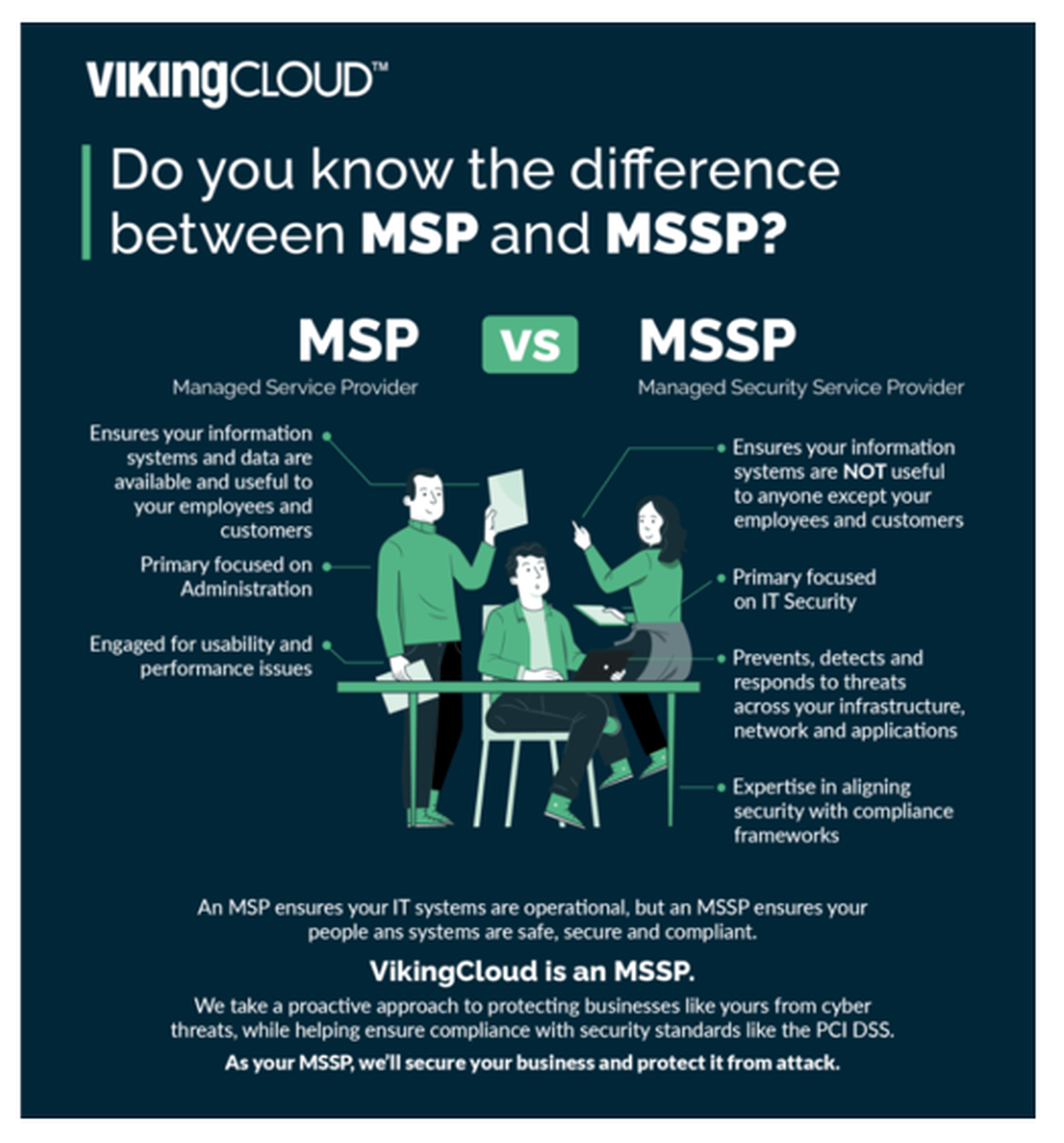For organizations too small to have in-house IT and cybersecurity personnel, a big challenge is to determine what’s needed more: A Managed Service Provider (MSP) or a Managed Security Services Provider (MSSP).
This article captures the differences and offers guidance to help determine your organization’s needs.
Overall differences
On the surface, here are the differences: An MSP ensures that an organization’s IT systems are up and running, while an MSSP offers all-encompassing security as a service, ensuring that users and systems are secure and compliant.
MSPs do keep an eye on security, but only on the surface. It is not necessarily a top priority. MSSPs, on the other hand, focus on security front and center. For a new small to mid-sized company, determining which one they need comes down to the nature of the business and customer base.
A small company selling goods must ensure that the data of customers who shop online is protected, and if the footprint is small enough, an MSP will likely fill the need. But if an organization is in an industry where there are many more data types to protect and the threat of ransomware and other cyberattacks is more constant – financial services and healthcare are good examples – deeper security measures may be required. That’s when an MSSP makes more sense.
MSP: Specific functions
An MSP provides defined, remote IT services to organizations that can’t afford the internal expertise to manage systems, databases and applications in-house. Specific services include the following (as listed by cloud security provider Acronis):
- Help desk
- Endpoint management and security
- Managed infrastructure, backups, applications, networks and firewalls
- Managed Microsoft 365
- Business VoIP
- Managed print
- Database optimization/management
- Managed cloud services
- IT staff augmentation/co-management
- T strategy services
MSSP: Specific functions
MSSPs provide security monitoring and management services to organizations to ensure they are protected from cybersecurity threats. This includes (also as listed by Acronis):
- 24/7 managed detection and response (MDR) to ensure security of systems/data
- Incident management and response to detect and respond to an attack
- Security asset management to continuously identify an organization’s IT assets and ensure they’re accessible only by authorized personnel and all security gaps are closed
- Firewall management, configuration, and monitoring to ensure a secure network
- Managed endpoint detection and prevention to block threats at the device level
- Managed network security to identify and respond to network threats
- Managed threat detection to detect and isolate advanced threats that evade existing security solutions
- Patch/vulnerability management to ensure that operating system and application patches are installed on a timely basis
- Virtual private network (VPN) management to ensure a business has a safe, encrypted online connection to the corporate network
- Managed risk assessments and compliance to evaluate a client’s security posture using industry-best standards and ensure regulatory compliance with standards such as PCI DSS, HIPAA, and ISO, and close attack vectors to network, mobile, and web environments
- Security awareness to improve a client’s security posture and ensure the organization is prepared for cyberattack at all levels
- Cyber breach forensic services to identify incidents and collect, analyze, and report evidence
- An incident response team to plan for and respond to incidents on behalf of a client
VikingCloud, an MSSP, created this infographic to distinguish itself from MSPs and can be useful for organizations trying to determine their needs:





